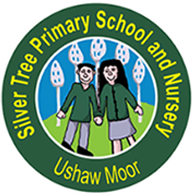Design & Technology
- The Curriculum Purpose of Study and Intent provides information on the relevance of this subject and why we teach it in this particular way at Silver Tree Primary School.
- The Implementation of Subject Content KS1 outlines how teachers at Silver Tree Primary School teach the subject across key stage 1
- The Implementation of Subject Content KS2 outlines how teachers at Silver Tree Primary School teach the subject across key stage 2
- The Subject Progression section outlines what progression in this subject looks like across the school and contains, where relevant, local links
- The Useful Subject Information section provides further information of the wider ways in which Silver Tree Primary School provides opportunities to engage with and deepen learning in this subject
- The Impact is detailed in our Intent statements, and states the impact evident from implementation of actions within the subject.
Intent of Design & Technology at Silver Tree Primary School
At Silver Tree Primary School we aim to deliver a practical Design Technology curriculum that encourages problem solving and thinking creatively. Children will participate in lessons that take them through the design, making and evaluation process to develop the skills needed to participate in an increasingly technological world.
We will encourage and foster:
- Problem solving and thinking creatively
- Knowledge of how technology contributes to daily life and the wider world.
- Children consider their own and other’s needs, wants and values.
- Solving real and relevant problems.
Impact of Design & Technology at Silver Tree Primary School
At Silver Tree Primary School children will learn a wide range of Design Technology skills that they can apply to the real world. They will be able to make purposeful products with and will become more confident in evaluating their own work, and each others, to think of further improvements they could make based on their evaluation.
Implementation of Design & Technology at Silver Tree Primary School
Within our Early Years Curriculum children are taught to represent their own ideas, thoughts and feelings through design and technology, art, music and dance. They recognise that a range of technology is used in places such as homes and schools. Children learn to select and use technology for particular purposes. They learn about similarities and differences in relation to places, objects, materials and living things.
In Key Stages 1 & 2 children are taught three units per year. Each unit of learning starts with children investigating and analysing a range of products against criteria. They will then design purposeful products by generating drawings, annotated sketches, templates, prototypes and mock ups. Using a range of tools and equipment, children build on skills in each year group to perform practical tasks. Once children have made a purposeful product they will evaluate their products.
One unit will focus on cooking and nutrition where children will understand the basic principles of the topic. They will build on skills learnt through previous teaching. In Key Stage 1, children will understand where food comes from and in Key Stage 2 they will understand seasonality, and know where and how a variety of ingredients are grown, reared, caught and processed.
The curriculum lead attends Design Technology Network meetings to stay abreast of regional and national good practice. This information is shared through staff meetings and supporting documents.
Subject Progression
DT Progression of Skills Document
Useful Information
Institution of Engineering and Technology
Technology and Engineering for Kids
Dyson – Engineering Challenges
Long Term Plan
Cultural Capital, SMSC and British Values
Cultural Capital in Design Technology is one of the key ingredients a child will draw upon to be successful in society, their career and the world of work. At Silver Tree Primary School we understand that each child’s cultural capital can vary vastly. Being mindful of this, we endeavour to provide opportunities with the Design and Technology curriculum that will give children a sense of enthusiasm for the subject, in turn fostering aspirations for their own futures.
To do this we will aim to provide opportunities such as:
- Visits to see food products in their raw state, fostering an understanding of how they are grown, and processes they go through before they arrive in our shops
- Visits to local businesses to see products being made
- Visits to local manufacturers
- School workshops including talks from local tradespeople
Through the projects we offer and the curriculum we deliver, pupils are taught how to investigate products, their function and how they can contribute to our daily lives. They are encouraged to develop thinking skills and explore the wider world, developing an open mind and use this inspiration and creativity when approaching their design work.
Pupils are faced with moral decisions through designing, selecting materials/ingredients, methods of manufacture, considering the needs of others, as well as the sustainability and environmental impact of products we make.
When pupils are asked to design and make products consideration needs to be given to the needs of others and value the feedback they receive; they must show mutual respect when working individually and collaboratively. Peer evaluation and self-evaluation of designed and made items plays a big part in Design & Technology work. Pupils learn to articulate their thoughts and feelings about their own and others’ work and learn to give and take criticism without offence.
Cultural development: Pupils are taught that all their design work should be sensitive to needs and beliefs of different backgrounds, ensuring all imagery, text and products won’t cause offence. They think about how their ideas and products and how they impact on the world around them. Pupils are encouraged use the work of artists and designers from a wide range of cultures and historical contexts to influence and support the development of their work.
